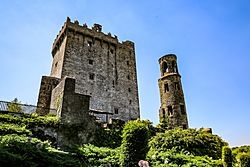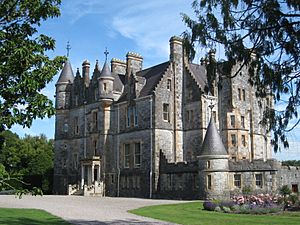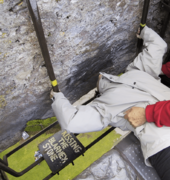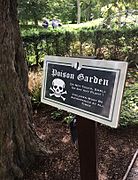Blarney Castle facts for kids
Quick facts for kids Blarney Castle |
|
|---|---|
| County Cork, Ireland | |

Main castle keep and tower
|
|
| Coordinates | 51°55′44″N 8°34′15″W / 51.9289°N 8.5708°W |
| Type | Medieval castle |
| Height | approximately 90 ft (27 m) |
| Site information | |
| Controlled by | MacCarthy family, Hollow Sword Blade Company, Jefferyes family, Colthurst family |
| Condition | Partial ruin |
| Site history | |
| Built |
|
| Built by | MacCarthys of Muskerry |
| Events | Desmond Rebellions, Irish Rebellion of 1641, Irish Confederate Wars, Williamite War in Ireland |
Blarney Castle is an old, strong castle in Blarney, near Cork, Ireland. People built earlier forts here, but the castle you see today was built by the MacCarthy family in 1446. It's famous for the Blarney Stone, which is high up on the castle walls.
Contents
History of Blarney Castle
Building the Castle
The first castle on this spot was likely a wooden house built before the year 1200. We don't have any proof of it today. Around 1210, a stone fort was built in its place. This stone fort was destroyed in 1446.
After it was destroyed, a powerful leader named Cormac Láidir MacCarthy rebuilt the castle. He was the Lord of Muscry. He also built other castles nearby, like Kilcrea and Carrignamuck.
Wars and New Owners
Blarney Castle was part of many important events in Irish history. During the Irish Confederate Wars, soldiers attacked the castle. In 1646, a group called the Parliamentarians, led by Lord Broghill, took control of it.
Later, when the king was restored to power in England, the castle was given back to Donough MacCarty. He became the 1st Earl of Clancarty.
In the 1690s, during another war called the Williamite War, the 4th Earl of Clancarty was captured. His lands, including Blarney Castle, were taken away by the Williamites.
After this, the castle was sold many times. Sir Richard Pyne, a judge, owned it for a short time. Then, in the early 1700s, Sir James Jeffreys, who was the governor of Cork City, bought it.
Blarney House and Gardens
The Jeffreys family later built a large house close to the old 15th-century castle. This house was later destroyed by fire. In 1874, a new mansion was built. It's called Blarney House and it looks out over a nearby lake.
Blarney House was designed in a style called "Scottish baronial." This means it looks like old Scottish castles, with towers and fancy stonework. John Lanyon, a famous architect, designed it.
In the mid-1800s, the Jeffreys family and the Colthurst family became connected through marriage. The Colthurst family still lives on the estate today.
Visiting Blarney Castle Today
Blarney Castle is now partly in ruins, but you can still explore some of its rooms and walk along the top walls. The most famous part of the castle is the Blarney Stone, also known as the Stone of Eloquence.
Many tourists visit the castle to kiss the Blarney Stone. To do this, you have to lean backward over a drop while holding onto railings. People say that kissing the stone gives you the "gift of gab," meaning you'll become very good at talking and telling stories. There are many old stories about where the Blarney Stone came from. Some say it was a special stone used to crown Irish kings.
Around the castle, there are large, beautiful gardens to explore. You can follow paths that lead to different interesting spots. Some of these are natural rock formations with fun names like Druid's Circle, Witch's Cave, and the Wishing Steps.
The grounds also have a special "poison garden." Here, you can see many plants that are poisonous, like wolfsbane, mandrake, and ricinus. Don't worry, there are signs to warn you! Blarney House is also open for visitors to see.
See also
 In Spanish: Castillo de Blarney para niños
In Spanish: Castillo de Blarney para niños






